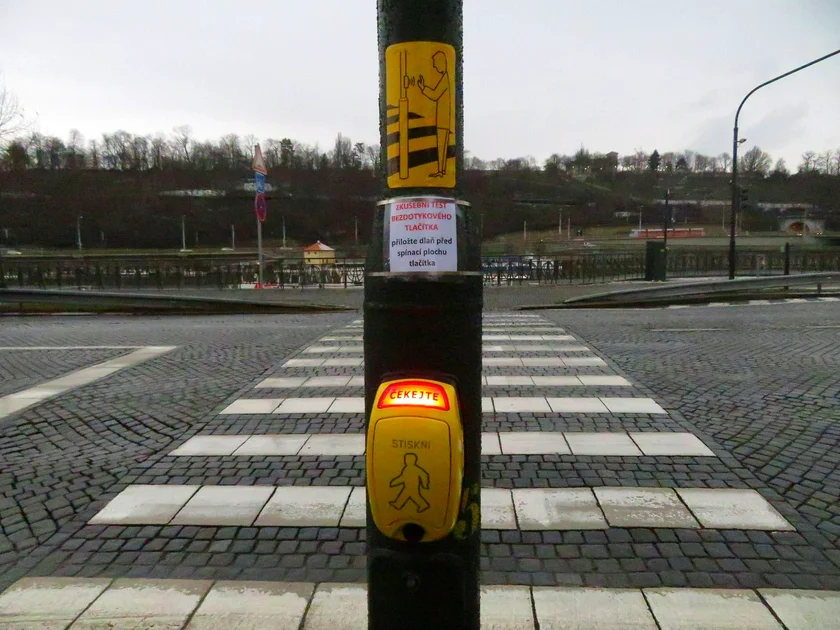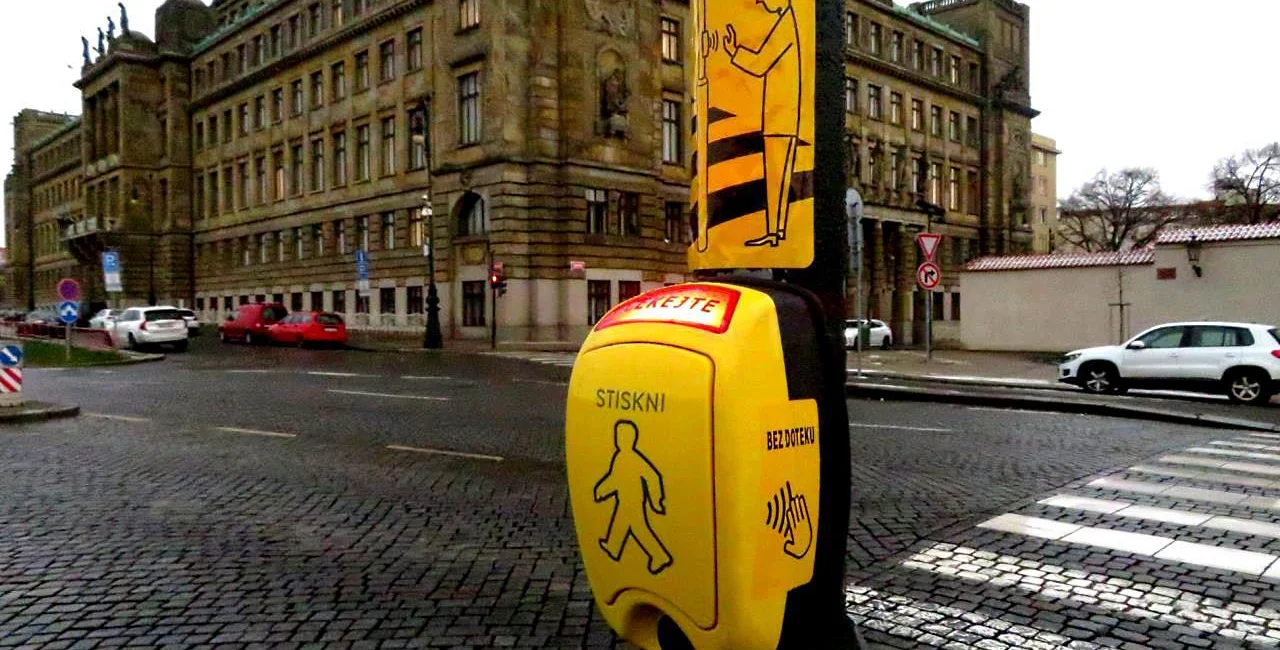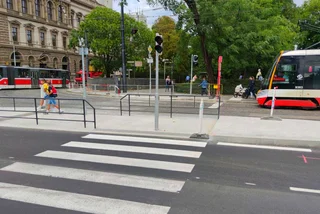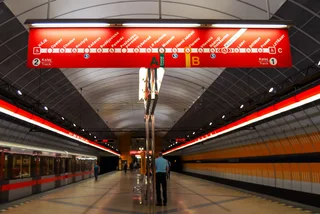Prague is testing contactless pedestrian buttons at an intersection. The buttons should help reduce the spread of COVID-19, as people will no longer need to touch the surface. This type of button did not previously exist, so the city cooperated in developing it from scratch.
Two buttons have been installed at the crossing at Dvořákovo nábřeží and Klášterská Street, near the St. Agnes Cloister. The buttons will operate for six months in trial mode.
Last spring, during the first wave of the pandemic, Prague switched off pedestrian buttons so people wouldn’t have to touch them, but that caused traffic complications. The lights would change regardless of whether someone was waiting, and thus traffic congestion on busy roads.
Žijeme v jediném městě široko daleko, kde si krátkým mávnutím a přidržením ruky přivoláme zelenou na přechodu, aniž bychom se museli čehokoliv dotknout. Nápad na bezdotykovou technologii jsem dostal během první vlny pandemie a dnes jsme ji začali testovat na Dvořákově nábřeží. pic.twitter.com/21HgbroA9H
— Adam Scheinherr (@Adam_Scheinherr) January 12, 2021
The buttons were developed by the lighting and telecommunication firm Eltodo in cooperation with the Prague’s Technical Road Administration (TSK).
“I came up with the contactless button about half a year ago during the first wave of coronavirus. We … found out that they basically do not exist on the European market,” Prague Deputy Mayor Adam Scheinherr (Praha sobě) said.
“In the end, TSK agreed that we would try to produce a prototype together with the company Eltodo, The trial run will be half a year, where we will also wait for feedback from people on whether they consider it to be beneficial for pedestrian traffic in the city,” he added.
TSK did not replace the entire button, but had a sensor installed on the side of a classic button. It senses a palm when it is held between five to 20 centimeters from the button.

A pictogram above the button explains how it is used. Text in Czech tells people that the system is being tested and asks them to place their hand in front of the button.
This distance is to keep it from turning the light green for pedestrians if someone is just passing by. That would cause cars to stop unnecessarily and disrupt traffic flow.
“It has its own autocalibration. If someone wants to interfere with the system, it will recalibrate within 20 seconds and it will recognize the obstacle,” TSK deputy director Martin Pípa said.
A mechanical button will also remain operational in case the sensor breaks down. “It's for security reasons,” Pípa said.
If the new system proves successful, the city will install it in other places during the renovations of intersections and traffic lights.
“By 2022, about 100 [traffic lights] are to be restored,” Scheinherr said. Sensors could appear, for example, at I. P. Pavlova, at the National Museum and at Charles Bridge.












 Reading time: 2 minutes
Reading time: 2 minutes 

























